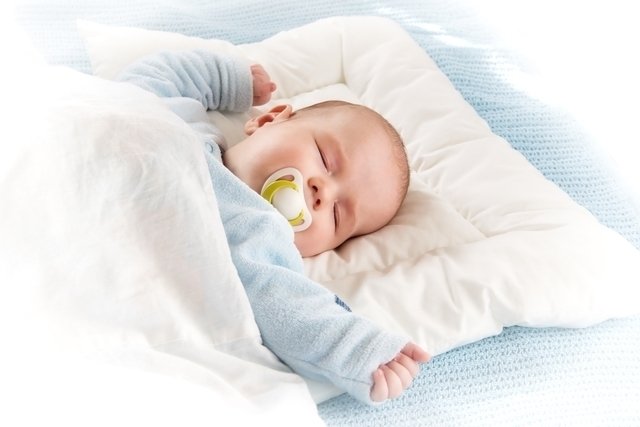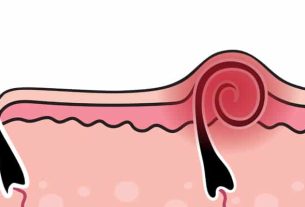Sudden death syndrome is when an apparently healthy baby dies unexpectedly and inexplicably in his sleep, before the age of one.
Although it is not known for sure what leads to the baby’s unexplained death, there are factors that may increase the risk of this happening, so it is important to adopt measures that protect the baby from sudden death syndrome, such as laying him on his back. in the crib, for example.

Why it happens
Although its cause is not fully understood, some possibilities indicate that sudden death may be related to the mechanism that controls breathing during sleep, by a part of the brain that is still immature, which develops throughout the first year of life, period during which there is a greater risk of suffering this syndrome.
Other causes may be low birth weight and the emergence of respiratory infections, which can make breathing difficult.
Furthermore, sudden death syndrome may also be related to some risk factors such as:
- Baby sleeps on his stomach;
- Parents are smokers and have exposed the baby to cigarettes when it was still in the womb;
- Mother’s age less than 20 years;
- Baby sleeping in parents’ bed.
Sudden death is more common during winter, especially in colder regions of Brazil, such as Rio Grande do Sul, where higher numbers of cases have been recorded, but it can also happen in summer in warmer places.
It is also believed that the greatest risk of suffering from this syndrome is when the baby has very warm clothes and blankets, which lead to the body overheating, making the baby more comfortable and tending to wake up less often. Furthermore, when faced with high temperatures, the baby more often experiences short stops in breathing, a situation called infant apnea.
Learn more about latent apnea, also known as ALTE.
How to avoid sudden baby death
The only way to avoid sudden baby death is to avoid the risk factors mentioned above and take care of the baby, making his crib a safe place to rest. Some strategies that can help are:
- Always put the baby to sleep on his back, and if he turns over during sleep, turn him back to his back;
- Putting the baby to sleep with a pacifier, which increases the functioning of the parasympathetic system, making him wake up more often even if he is not fully awake;
- Avoid placing blankets or heavy blankets that could cover the baby if he moves during sleep, it is best to dress the baby in long-sleeved pajamas and long pants with warm fabric and use only a thin sheet to cover him. If it is very cold, you should cover the baby with a fleece blanket, avoiding covering the head, placing the sides of the blanket under the mattress;
- Always put the baby to sleep in his crib. Although the crib can be placed in the parents’ room, this practice is not recommended if one of the parents is a smoker;
- Do not put the baby to sleep in the same bed as the parents, especially after drinking alcohol, taking sleeping pills or using illicit drugs;
- Feed the baby with breast milk;
- Position the baby with their feet against the bottom edge of the crib, to prevent them from sliding and getting under the covers.
Sudden death syndrome is not fully understood and more research must be carried out to understand its causes.
How many months can a baby sleep on their stomach?
The baby can only sleep on his stomach after 1 year of age, which is when there is no longer a risk of sudden death syndrome. Until then, the baby should only sleep on his or her back, because this position is the safest and, as the baby’s head will be on one side, there is no risk of choking.

Sign up for our newsletter and stay up to date with exclusive news
that can transform your routine!
Warning: Undefined array key "title" in /home/storelat/public_html/wp-content/plugins/link-whisper-premium/templates/frontend/related-posts.php on line 12
Warning: Undefined array key "title_tag" in /home/storelat/public_html/wp-content/plugins/link-whisper-premium/templates/frontend/related-posts.php on line 13



